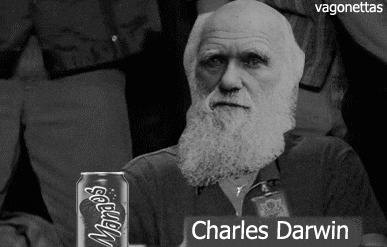TEACHER: Jorge Mario Gamboa Carvajal
INSTITUTIONAL EMAIL:
Jorge.gamboa.c@liceopinoverde.edu.co
HOURLY INTENSITY BY CYCLE (HIC): 2
GRADE: 10° Track A
PERIOD: First and Second
- INTRODUCTION
The study of biology in tenth grade allows students to experience an approach to life understanding from a scientific perspective and deepen in the comprehension of processes and phenomena linked to reproduction and the main process in molecular biology, biotechnology and evolution through natural selection. This class will follow a scientific and technological approach and the learning processes allows students to inquire and apply different science methodologies. These contents will be related to wider concepts such as systems and change.
- GENERAL OBJECTIVE
To construct a proper comprehension about reproduction and process
related to genetic inheritance, by means of consulting different sources of
information and analyzing diagrams and texts.
- COMPETENCES / ABILITIES TO DEVELOP
Objective A: Knowing and understanding
i. explain scientific knowledge.
ii. apply scientific knowledge and understanding to solve problems set in familiar and unfamiliar situations.
iii. analyze and evaluate information to make scientifically supported judgments.
Objective B: Inquiring and designing
i. explain a problem or question to be tested by a scientific investigation.
ii. formulate a testable hypothesis and explain it using scientific reasoning.
iii. explain how to manipulate the variables, and explain how data will be collected.
iv. design scientific investigations.
Objective C: Processing and evaluating
i. present collected and transformed data.
ii. interpret data and explain results using scientific reasoning.
iii. evaluate the validity of a hypothesis based on the outcome of the scientific investigation.
iv. evaluate the validity of the method.
v. explain improvements or extensions to the method.
Objective D: Reflecting on the impact of science
i. explain the ways in which science is applied and used to address a specific problem or issue.
ii. discuss and evaluate the various implications of the use of science and its application in solving a specific problem or issue.
iii. apply scientific language effectively.
iv. document the work of others and sources of information used.
- METHODOLOGY
• Team or individual workshops.
• Presentations.
• Individual Tests.
• Team tests’ corrections.
• Experimental activities.
• Whole class discussions.
- CONTENT AND CONCEPTS
- Evolution
● Earth History
● Natural Selection
● Sexual Selection
● Mutation
● Genetic Drift
● Small Population Effects
- Topic: Mendelian Genetics Review:
● Genes, alleles and chromosomes
● Meiosis
● Mendelian inheritance patterns
● Monohybrid crosses
● Dihybrid crosses
- Non-Mendelian inheritance:
● Non-Mendelian inheritance patterns
▪ Co-dominance
▪ Multiple phenotypes from multiple alleles
▪ Sex linkage inheritance
● Pedigrees
- Biotechnology
● Basic Industrial Applications
● DNA footprint
● Cloning
● GMO
- EVALUATION PROCESS
|
Formative evaluation |
- Activities in Khan Academy platform. - Teams workshops. - Experimental activities - Topic games |
|
Summative evaluation |
- Khan Academy quizzes. - Individual tests - Test corrections - Experimental reports - Role based activities |
|
Evaluation Criteria |
Percentages |
|
Knowing and understanding |
25% |
|
Inquiring and designing |
25% |
|
Processing and evaluating |
25% |
|
Reflecting on the impact of science |
25% |
- RESOURCES
|
Resources |
|
|
Technological |
- Personal computer or Tablet - Institutional e-mail. - Google applications: Drive, Slides, Excel - ClaseWeb - NearPod - FlipGrid |
|
Bibliographic |
- Learns Genetics – Gentics Science Lerning Center. University of Utah: https://learn.genetics.utah.edu/ - Khan Academy: https://www.khanacademy.org/ - Biggs, A., National Geographic Society (U.S.), & Glencoe/McGraw-Hill. (2002). Biology: The dynamics of life. New York, N.Y: Glencoe/McGraw-Hill.http://learn.genetics.utah.edu/content/addiction/drugs/mouse.html - NearPod |
|
Notebook and pencil case. |
|
|
Behavioral recommendations for the proper development of the class |
- The classes will be carried out under an atmosphere of respect, where the school’s rulebook will prevail. - The use of electronic devices will be allowed and supervised by the teacher. - Punctuality is primordial; all students must be willing to - receive the class in the best possible way. - When having doubts or difficulties, consult your teacher. To recognize your strengths and weaknesses is an important step to help you to achieve the objectives. - Be sure to follow security protocols in practical activities. |

- Profesor: Jorge Mario Gamboa Carvajal